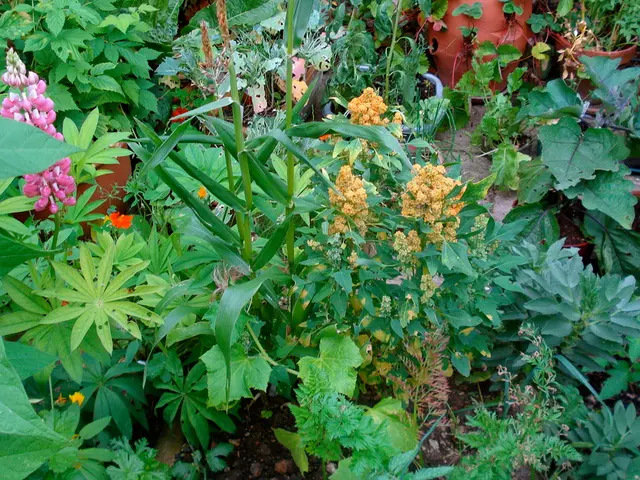Methods for Irrigating Your Vegetable Patch
Watering your vegetable garden effectively can save you time and unnecessary water use. Here's how to create a sustainable watering routine based on your garden's characteristics, weather, and plant types.
1. Know your soil
- Sandy soils drain quickly, requiring more frequent watering, while clay soils retain moisture longer and demand less frequent but deeper watering. Loam soils, a balance of the two, need moderate watering. Adding organic matter or mulch can improve moisture retention.
2. Consider the weather
- Higher temperatures (85°F+) increase water demand significantly, necessitating daily soil moisture checks. Evaporation increases on low humidity or windy days, especially in drier climates. During cool seasons, water needs decrease, and adjust your watering routine accordingly.
3. Understand plant needs
- Seedlings have shallow roots and require consistent moisture. Mature plants can benefit from deep, less frequent watering to encourage deep roots. Thirstier plants like cucumbers and zucchini need more water, while established plants may fare better with one to three deep watering sessions per week instead of daily light sprinkling.
4. Set up a watering schedule
- Aim for about one to two inches of water weekly in-ground gardens; raised beds may dry out faster and need more frequent watering. Use 5:00–9:00 a.m. as the best time to water, as this helps reduce evaporation and allows plants to absorb moisture during the day. Monitor soil moisture regularly by inserting a finger 2 inches into the soil, checking for dampness or dryness.
5. Adjust for various garden types
- In smaller gardens or raised beds, water more often due to faster drying. Use irrigation methods like drip systems for efficient, even water distribution.
Keep an eye on plant health indicators like wilting, curling, or dull leaves, as these may signal a need for water. With these insights, you'll develop a flexible and efficient watering routine to ensure a thriving vegetable garden.
For more gardening tips, including composting, no-till methods, and raised garden bed setup, visit our website or follow us on Facebook, Instagram, or Pinterest. By tailoring your watering routine to your specific garden conditions, you'll nurture a healthy vegetable garden all season long.
- Raised beds can dry out faster than in-ground gardens requiring more frequent watering.
- Adjust your watering routine during cool seasons as water needs decrease.
- Mature plants benefit from deep, less frequent watering to encourage deep roots.
- Setting up a watering schedule helps reduce evaporation and ensures adequate moisture for plants.
- During higher temperatures, water demand significantly increases, necessitating daily soil moisture checks.
- Drip systems can be used in smaller gardens or raised beds for efficient, even water distribution.
- A balanced soil with a mix of sandy and clay soils (loam) needs moderate watering.
- Organic matter or mulch can improve moisture retention in soil, making it more efficient for gardening in cold climates and reducing the need for frequent watering.







